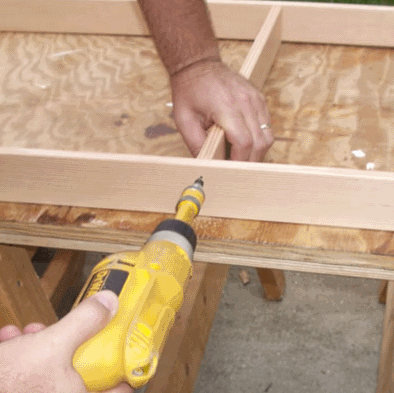
Since the project is the visible result of all your efforts, it is very important that you spend considerable time in choosing a good one.
There are many things to consider, among them your needs, the size of project your are qualified to make, the kind and cost of the woods, the finish, and the design.
The following are five questions to help you select the right woodcraft project to work on.
1. Do You Have a Need for the Project?
The most important thing is to determine whether or not you can use the article after it is finished.
Too much of what is made in the school and home workshops finds its way into a storage room, attic, or basement.
There are so many practical and useful things that can be made of wood that it is a shame to waste your time and effort on some needless object.
Before deciding one one particular project, ask yourself what you need for your house, yard, for sports, or for some other activity in which you are interested.
This should give you a good clue to the type of project you will find more satisfying.
2. Can You Build It?
The next thing to think about is the size of the project and the difficulty of building it.
There is a tendency for beginners to want to make something too big, too complicated, or too difficult.
While you need not “fear” any project, you must have the time and experience for it.
If you choose too big a project at first, you will face so many problems that you may lose interest, never finish the project, and thus become discouraged with woodworking.
So begin by making some small article that involves few tools and processes until you have gained some experience and know how long it takes for one step.
For example, building one single joint or squaring up a piece of stock.
The size of the project shouldn’t be the measure of its appeal.
3. How Much Will the Materials Cost?
Another decision is the kind of wood to use and how much you want to spend.
Of course, ideal cabinetmakers’ woods for fine pieces of furniture are the better woods such as walnut, mahogany, oak, cherry, and maple.
But the kind of wood you choose will naturally affect the cost of the project.
One made of oak or walnut will cost twice as much as the same one of fir, spruce, poplar, or red gum.
Selection of woods for beginners is important also because of the difference in the working qualities of woods.
When learning the first procedures, it is much easier to work with soft woods like poplar, pine, or bass.
It takes a good deal more skill to do planning and chiseling on birch, for example, than a soft wood, because birch and other hard woods tend to resist tools.
4. What Kind of Finish Will You Apply?
Still another problem to think through is the color and kind of finish.
If you are planning to use some opaque finish such as lacquer or paint, it is just as well to use some relatively inexpensive wood like pine, basswood, or poplar.
If you plan to have a transparent finish, it will be important to decide on the color and kind of that finish before you being.
Of course, all woods can be bleached to give them a light appearance, but, generally speaking, we think of oak or maple as being lighter than walnut, mahogany, or cherry.
The kind of finish you apply should bring out the best qualities in the wood.
5. What Is The Design of the Project?
Regardless of the size or the kind of article you choose, the style or design should fit your needs and the kind of home in which you live.
Too frequently small projects such as bookends, end tables, and similar pieces are made with no regard to the kind of room in which they will be used.
Even such a project as a small watch stand can be varied considerably between traditional and modern style to fit your tastes.
Conclusion
When all these questions have been answered and exactly the right project selected, you are ready for the fascinating job of building it.
From now on you will need lots of patience and attention to detail, but the results will be well worth it.
